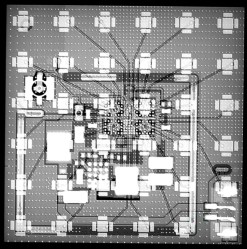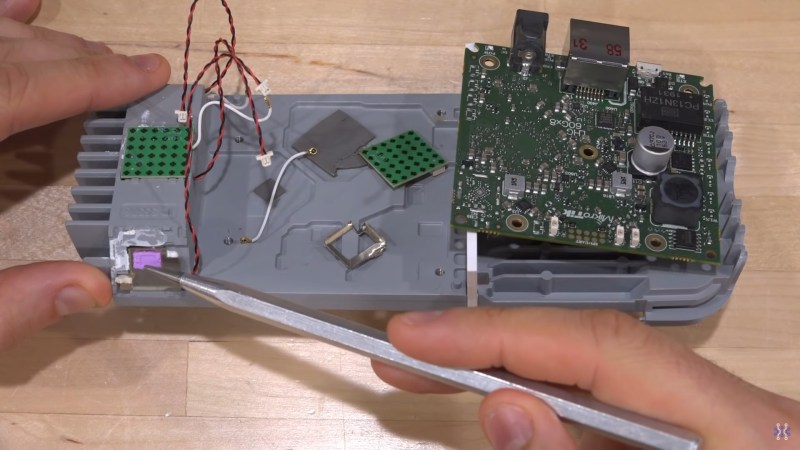The term “phased array” has been around for a long time, but in recent years we’ve heard more and more about the beam shaping that’s possible with phased array antennae. In the video below the break, [The Signal Path] breaks down a Qualcomm 60GHz WiGig unit, and does a deep dive, even looking at the bare silicon and an x-ray of an antenna.

Some fascinating highlights include how not only the data signal is sent to the antennae through a standard coaxial cable, but so are control signals and a base clock frequency. [The Signal Path] explains how the manufacturer chose to use what’s called a SuperHeterodyne (aka “superhet”) architecture, which is not all that different from those used in traditional amateur radio transceivers. In theory, anyway.
Another element that is discussed is how the PCB’s themselves are used as waveguides, inductors, and transmission line matches, among other countless little hacks to fit a rather complex system into a truly diminutive space.
If you’re not familiar the concept behind phased arrays, check out this article we published in 2019 that shows how phased arrays can steer a beam without any moving parts. It’s quite fascinating!
















bare silicone ?
… and really annoying to glue anything to :)
If my mammary is correct, it’s not spelt silicone!
(Snort!)
GAH. One day, I will spell it correctally. Thanks for mentioning it. I had to read your comment a couple of times before it sank in though.
It happens. Fortunately it only affects the electronics of Hollywood.
I was wondering about this and looked up WiGig “which operate[s] in the 2.4, 5 and 60 GHz bands, deliver data transfer rates up to 7 Gbit/s (for 11ad)”. So the purpose of the phased array?
Pretty neat stuff.
All multi element antennas are phased array. Keep in mind that a parabolic dish is a phased array because of the reflective surface’s distance from the focal point. Phased array antennas shouldn’t be confused with dynamic phased array which can change patterns, directionality, and gain electronically.
I’ve always wondered how Mikrotik managed to feed signal to 36 tiny antennae through single coax. I was expecting them to use some extremely smart passive circuitry, standing waves and stuff like that. After watching this video i know they are actualy only feeding 32 of the antennas by using complex active circuitry which gets configured dynamicaly by digital data present in lower bands on the same coax cable. Still quite interresting topic as beamforming (beamsteering) technology is rapidly geting it’s way into lots of telco devices.
I guess they use different channels and a RC pass divider trickery to split them
Nice, there might now be enough info out there to run these antennas/transverters stand alone without the wifi card hardware.
Allowimg everyone to extend their hackRF’s range to the 60GHz WiGig band, in both transmit and receive!
Ah, if the hardware was just cheaper on ebay for playing around…
There is: http://m3.ucsd.edu/sdr/
WiGig seems to have been a flash in the pan, is there such a thing as an AP for it? Can I use it to send arbitrary data between laptops, or is it just a bit-pipe for HDMI?
I recently went looking for WiGig hardware and could only find docking stations and minipcie cards, but they call themselves “sender” and “receiver”, which is….. not what I would expect from network cards.